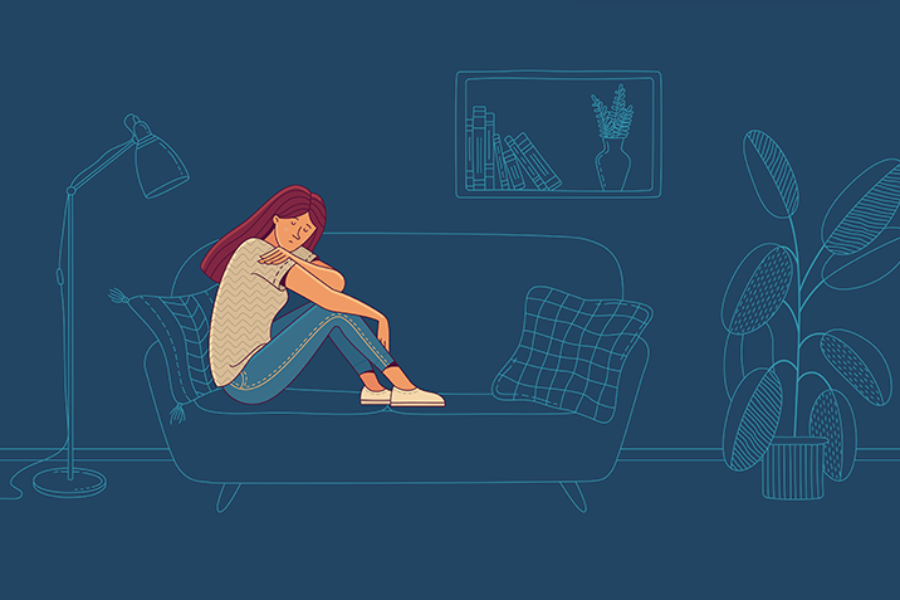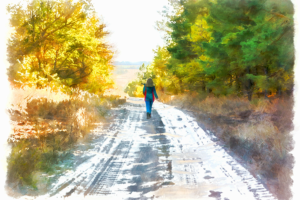Agoraphobia was one of my first diagnoses. As a child, I didn’t know what this word meant. I now know that this mental health condition, according to Dr. John Barnhill of New York-Presbyterian Hospital, is the “fear and anxiety about being in situations or places without a way to escape easily or in which help might not be available if intense anxiety develops.” About 30-50% of people with agoraphobia also have panic disorder, which is my case as well.
Some people, like me, develop agoraphobia because of a public panic attack. The fear can become so overwhelming that it forces people to become housebound. After moving to a different city that is only 20 minutes from where I previously lived, I was unable to drive for weeks, even though I’ve lived in this area for nearly 20 years.
Agoraphobia is something I have dealt with since I was a child, but as an adult, it can be profoundly overwhelming and limiting. While finding coping mechanisms has been a long work in progress, I have learned a lot on my journey to manage my agoraphobia.
Agoraphobia Symptoms
The DSM-5 criteria for a diagnosis are that the patient must have a marked, persistent fear of or anxiety about two of the following situations.
- Using public transportation
- Being in open spaces
- Being in an enclosed place
- Standing in line or being in a crowd
- Being alone outside the home
Several of these resonate with me; I can’t be in any crowded place or enclosed space — and going outside my home by myself is a challenge without the benefit of having a person that can help me navigate my anxiety or where help is not available.
I am, however, capable of going places outside my home — provided that it’s an open space and that I’m with someone else. The benefit of having a “safe” person is knowing that someone else can take control of the situation or offer help, if needed. This is largely because a core component of panic disorders and agoraphobia is the fear of being out of control. Beyond having a “safe” person, I need to deem the place I’m going as “safe.” Essentially, these are places that do not trigger my agoraphobia or places where I have been able to rely on my coping skills.
Exposure Therapy
For about three years I did exposure therapy, a treatment developed to help people confront their fears with a trained professional.
My therapist would give me small, achievable goals. For instance, one goal might be to sit in the parking lot. Then drive somewhere with a partner or friend — so you have someone to take control if anything happens. These incremental exposure steps allowed me to make progress; I went from never going to the grocery store or never driving to my local coffee shop, to being able to ease my way into it.
This type of therapy is used to break the pattern of avoidance and fear. It’s been nearly two years since I’ve engaged in exposure therapy, largely because I became comfortable in the city I lived in. I could go to the grocery store, pharmacy and local coffee shop, and I could work with relative ease. All my boxes were checked.
Now that I have moved again, I have found myself having a harder time coping. My anxiety and avoidance behaviors are exacerbated by trying to find my way around an unfamiliar place.
Cognitive Behavior Therapy (CBT)
CBT is another technique that practitioners often use to treat agoraphobia because it actively challenges your way of thinking. For example, I am scared I am going to have a psychotic break in public. My therapist would reword this fear to, “I am scared to have a psychotic break, but I have a plan in place to call my partner to ease my anxiety.”
Reminding myself of my preparation has been effective. And, of course, having a real plan in place was critical; In the workplace, everyone had my partner’s phone number in case of an episode occurring in public. This made it easier to navigate public places knowing that he was always on hold. But this can be a lot of responsibility for any caregiver, so I also have other coping skills in place as well.
Coping Skills
To alleviate my most severe symptoms, I have developed several effective coping skills. These are a few practices that have been useful to me.
- Deep breathing: breathing in through my nose and out of my mouth. This is a common practice to help ease anxiety in any situation — and I have found that it is one of the easier skills to implement anywhere.
- Using coloring books: coloring has become something that is both relaxing and distracting. Using my hands and my creativity can help calm my thoughts and relax my body.
- Wearing noise cancelling headphones: using these headphones was helpful in blocking the noises from public spaces that triggered me. For example, typical sounds in a grocery store — murmuring voices, etc.— reminded me of my episodes of psychosis, specifically the auditory hallucinations. To avoid this trigger and a possible panic attack, I do my best to regulate my senses.
- Reading: I have found that concentrating on something quiet and comfortable and grounding myself in words eases my anxiety.
My Advice
My advice to those looking to address their agoraphobia is to test your limits — carefully. It’s important to pay attention to what you’re feeling in your body and pinpoint the moment when you are pushing too far. You know your body best. A common warning sign for me is feeling lightheaded or the beginnings of a panic attack, which manifests in a racing heartbeat, trouble breathing and sweaty palms. These symptoms signal it’s time to take a moment for myself. Perhaps the most effective tool I have learned from therapy is to better understand my triggers, my body and what I need to regulate myself physically and emotionally.
I also believe in acknowledging every milestone. Even trying to overcome your fears is an achievement. Celebrate those small accomplishments, like sitting in a parking spot — even if you can’t physically go into the store. It’s also important to remember that no journey is linear; don’t be let down when you “back-pedal.” Everyone has harder days, and if you have a day where you can’t go to the grocery store, trying is enough.
When it comes to managing agoraphobia — everything is a work in progress.
Erica Camp has volunteered in the mental health field for the last three years, writing about mental illness and recovery. Passionate about dealing with mental illness in the workplace, she writes about her lived experience. Her goal is to educate others and to help people understand the complexities of mental health.
Source: https://nami.org/Blogs/NAMI-Blog/February-2023/How-I-Cope-with-Agoraphobia




